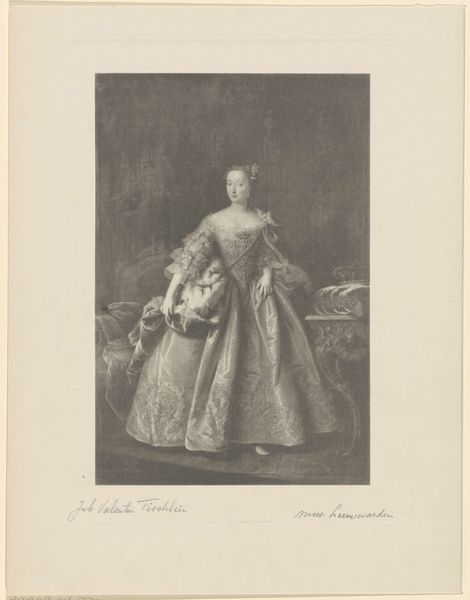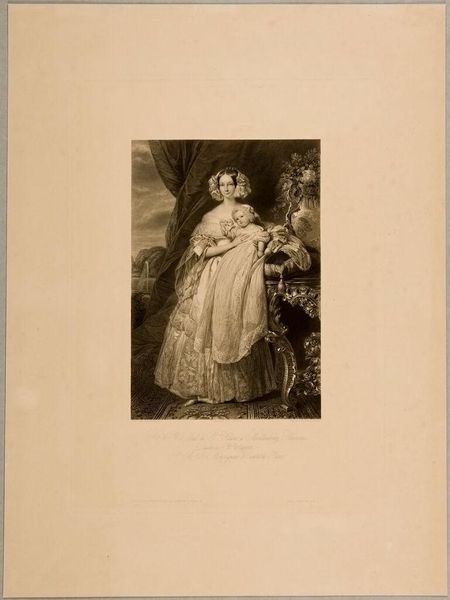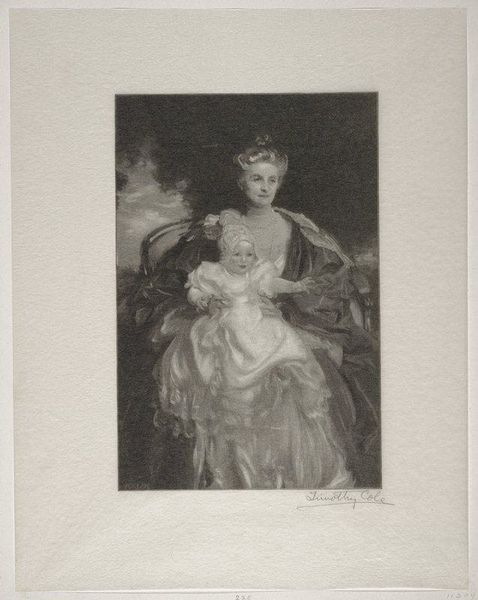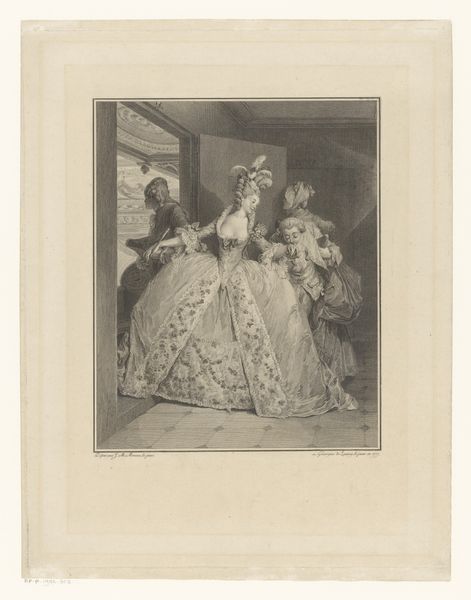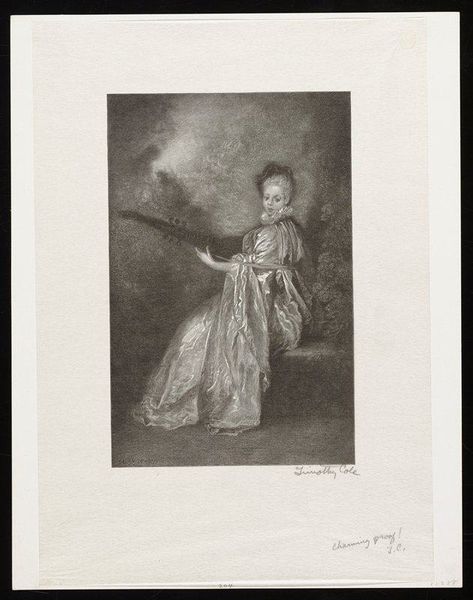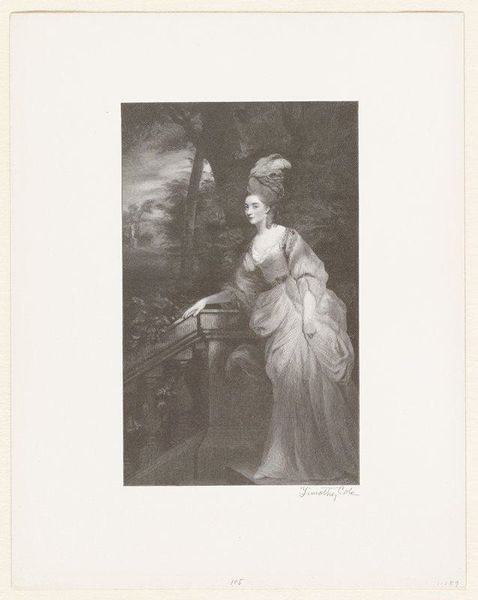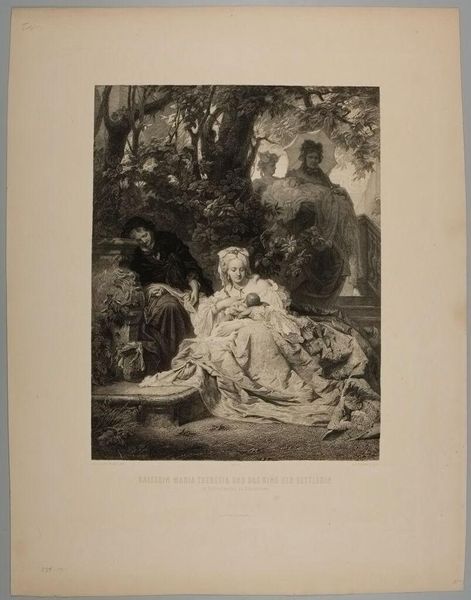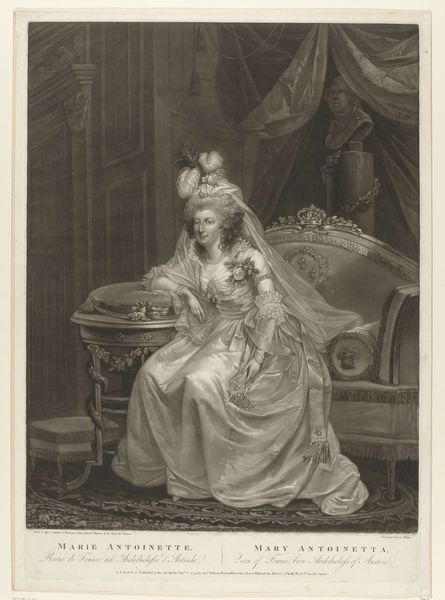
print, woodcut, wood-engraving
#
portrait
#
pencil drawn
# print
#
woodcut
#
academic-art
#
wood-engraving
Dimensions: 7 7/16 x 5 1/16 in. (18.89 x 12.86 cm) (image)12 x 9 9/16 in. (30.48 x 24.29 cm) (sheet)
Copyright: No Copyright - United States
Curator: Looking at this work by Timothy Cole from 1909, a wood-engraving titled "Marie Leszczinska," currently held at the Minneapolis Institute of Art, the first thing that strikes me is the intricate detail for such a graphic medium. Editor: Yes, that’s exactly what hit me too – it’s an exceptionally rendered portrait, seemingly of immense opulence and formality, yet somehow rendered in very stark, grayscale tones, which almost deflates its presumed grandiosity. I see an almost eerie flatness. Curator: I see the austerity as deliberate, Cole operating within a well-established system. Consider the period – early 20th century – where the woodcut, after a decline, experienced a resurgence thanks to the Arts and Crafts movement, and how that re-emergence challenged established artistic norms and provided platforms to various underrepresented individuals within visual arts. The choice of a woodcut suggests a potential democratizing of representation, of access. Editor: An interesting perspective. I would add the subject reinforces its accessibility– or lack thereof! Marie Leszczinska was Queen of France, wife of Louis XV. This presents the unavoidable conversation about power, privilege, and perhaps, in this particular moment of artistic creation, a reconsideration of inherited systems of inequality. I can't help but wonder how Cole grapples with class disparity via the graphic image. Curator: Certainly. The original portrait source will provide its own layers of meaning – What narratives about Marie did it circulate, what function did it play? However, I feel Cole consciously brings awareness to bear regarding institutional roles around visual art production as gatekeepers of public memory, which could invite a further unpacking about identity formation within gendered frameworks, especially female identity constrained by monarchical expectation. Editor: I agree that the reinterpretation carries a lot of weight. I keep coming back to the details: The almost gothic quality in the drape of fabric, even that tiny dog at the Queen's feet–each facet seems to hint at a wider set of class relations embedded in systems of oppression and cultural values of the time. I would like to explore that historical portraiture and contemporary power dynamics as expressed and re-translated in visual culture. Curator: A powerful work, indeed. Editor: A potent reminder of the visual legacy that binds and sometimes blinds us.
Comments
No comments
Be the first to comment and join the conversation on the ultimate creative platform.
